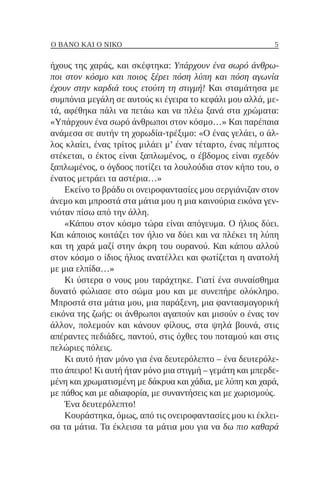Fast-Moving Storms: The Dangers Of High Winds And Effective Safety Measures

Table of Contents
Understanding the Dangers of High Winds in Fast-Moving Storms
High winds associated with fast-moving storms are a major source of destruction and danger. The sheer force of these winds can cause significant damage to property and pose serious threats to personal safety.
Structural Damage: The Power of High Winds on Buildings
High winds can inflict devastating structural damage to buildings and infrastructure. The pressure exerted by strong winds can compromise even well-constructed buildings.
- Roof damage: High winds can lift shingles, tear off roofing materials, and even completely remove roofs from houses.
- Broken windows: The impact of wind-blown debris or the sheer pressure differential can shatter windows, leading to further damage and potential injuries.
- Fallen trees impacting homes: Trees uprooted by strong winds can cause significant damage to houses, potentially crushing structures or creating openings for water damage.
- Power line damage leading to outages: Falling trees and high winds can easily snap power lines, causing widespread power outages and creating a further hazard with downed lines.
The force exerted by wind is measured in mph (miles per hour) or kph (kilometers per hour). Even moderate wind speeds can cause damage, while winds exceeding 70 mph can cause catastrophic structural failure. Different building materials react differently to these forces; older buildings with weaker structures are particularly vulnerable. For example, poorly secured roof tiles can easily be ripped off by winds of 40 mph, while stronger winds could even cause structural damage to walls.
Flying Debris: A Hidden Danger in High Winds
During fast-moving storms, seemingly innocuous objects transform into dangerous projectiles propelled by intense winds.
- Debris from construction sites: Unsecured materials like plywood, metal sheeting, and tools can become deadly missiles.
- Unsecured outdoor furniture: Lightweight items like chairs, tables, and umbrellas become airborne hazards.
- Broken branches: Strong winds can snap branches from trees, sending them flying with considerable force.
- Signs and billboards: Large signs and billboards can be ripped from their moorings, posing a significant threat to anything in their path.
The potential for serious injury or even death from flying debris is very high during a fast-moving storm. Securing all loose objects before a storm hits is a crucial preventative measure to mitigate this risk.
Power Outages and Their Consequences: Beyond the Inconvenience
Fast-moving storms frequently cause power outages due to high winds damaging power lines and electrical infrastructure. These outages can have far-reaching and potentially dangerous consequences.
- Loss of heating/cooling: Depending on the season, a power outage can create dangerously cold or hot conditions in your home.
- Spoiled food: Refrigerated and frozen food can spoil quickly, leading to food waste and potential health hazards.
- Inability to communicate: Power outages can disrupt communication lines, making it difficult to contact emergency services or loved ones.
- Medical equipment failure: People who rely on electrically powered medical equipment are particularly vulnerable during power outages.
Downed power lines pose a significant electrocution risk. Never approach a downed power line; always assume it is live and dangerous. The cascading effects of a power outage can significantly impact daily life and safety.
Preparing for Fast-Moving Storms: Essential Safety Measures
Proactive planning is your best defense against the hazards of fast-moving storms. Taking steps to prepare before a storm hits is crucial for minimizing risk and ensuring safety.
Developing a Storm Preparedness Plan: Proactive Planning for Safety
Creating a detailed storm preparedness plan is essential for ensuring the safety of you and your family.
- Establishing a communication plan with family: Designate a point of contact and establish alternative methods of communication in case phone lines are down.
- Creating an emergency kit: Assemble a kit with essential supplies like water, non-perishable food, a first-aid kit, flashlights, batteries, a radio, and any necessary medications.
- Identifying safe rooms in your house: Determine a safe room in your home, ideally an interior room on the lowest level, away from windows.
A comprehensive plan should also include identifying potential evacuation routes and having a backup plan in case you need to leave your home. Consider the specific needs of family members, including pets, and ensure everyone knows the plan.
Securing Your Home and Property: Preventing Damage Before It Happens
Taking steps to secure your home and property before a fast-moving storm hits can significantly reduce the risk of damage.
- Bringing loose objects inside: Bring all outdoor furniture, decorations, and other loose items inside to prevent them from becoming projectiles.
- Trimming trees and shrubs: Trim overhanging branches to prevent them from falling onto your home or power lines.
- Securing outdoor furniture: Tie down or bring inside any loose outdoor furniture that could be blown away.
- Protecting windows: Consider boarding up windows or using storm shutters to protect them from damage.
These preventative measures can dramatically reduce the impact of high winds and significantly minimize property damage. Investing time in these preparations is an investment in your safety.
Monitoring Weather Reports and Warnings: Staying Informed is Key
Staying informed about approaching storms is paramount to effective preparation and timely action.
- Utilizing reliable weather sources: Monitor weather reports from reliable sources like the national meteorological service and local news channels.
- Understanding different warning levels (watch vs. warning): Understand the difference between a watch (conditions are favorable for a storm to develop) and a warning (a storm is imminent or occurring).
Heeding warnings issued by authorities is critical. Don't underestimate the power of fast-moving storms; timely action can save lives and minimize damage.
Responding to a Fast-Moving Storm: Safety During and After
Knowing how to react during and after a fast-moving storm is vital for ensuring your safety.
Actions to Take During a Storm: Prioritizing Safety During High Winds
During a fast-moving storm, prioritizing safety is paramount.
- Staying indoors: Remain indoors in a designated safe room, away from windows and doors.
- Moving to a safe room (basement, interior room): Seek shelter in a sturdy interior room on the lowest level of your home, away from windows.
- Avoiding windows: Stay away from windows and doors, as they are the most vulnerable points of your home during high winds.
- Unplugging electronics: Unplug electronic devices to protect them from power surges.
Assessing Damage and Seeking Help After a Storm: Post-Storm Safety and Recovery
After a storm, assessing damage and seeking help safely is crucial.
- Checking for structural damage: Carefully inspect your home for any structural damage, including roof damage, broken windows, and foundation issues.
- Reporting downed power lines: Report any downed power lines to the appropriate authorities immediately.
- Contacting emergency services if needed: Contact emergency services if you or others have been injured or if your home has sustained significant damage.
- Taking photos of damage for insurance: Take photos of any damage to your property for insurance purposes.
Conclusion: Prepare for Fast-Moving Storms Now!
Fast-moving storms present significant dangers due to their intense high winds, leading to structural damage, flying debris, and power outages. By understanding these risks and implementing effective safety measures, including developing a comprehensive preparedness plan, securing your property, and diligently monitoring weather reports, you can significantly reduce the potential for harm. Remember, proactive preparation is your best defense against the dangers of fast-moving storms and severe weather events. Don't wait – prepare for fast-moving storms now! Take action today to safeguard yourself and your family from the unpredictable power of these weather events. Create your storm preparedness plan and stay safe.

Featured Posts
-
 Resilience And Mental Health Turning Adversity Into Growth
May 20, 2025
Resilience And Mental Health Turning Adversity Into Growth
May 20, 2025 -
 Bbai Investors Deadline Approaching Contact Gross Law Firm Regarding Potential Legal Action
May 20, 2025
Bbai Investors Deadline Approaching Contact Gross Law Firm Regarding Potential Legal Action
May 20, 2025 -
 Protomagia Sto Oropedio Evdomos Odigos Gia Mia Aksexasti Empeiria
May 20, 2025
Protomagia Sto Oropedio Evdomos Odigos Gia Mia Aksexasti Empeiria
May 20, 2025 -
 David Walliams And Simon Cowell The End Of A Friendship
May 20, 2025
David Walliams And Simon Cowell The End Of A Friendship
May 20, 2025 -
 Michael Schumacher Grand Pere Pour La Premiere Fois D Une Petite Fille
May 20, 2025
Michael Schumacher Grand Pere Pour La Premiere Fois D Une Petite Fille
May 20, 2025
